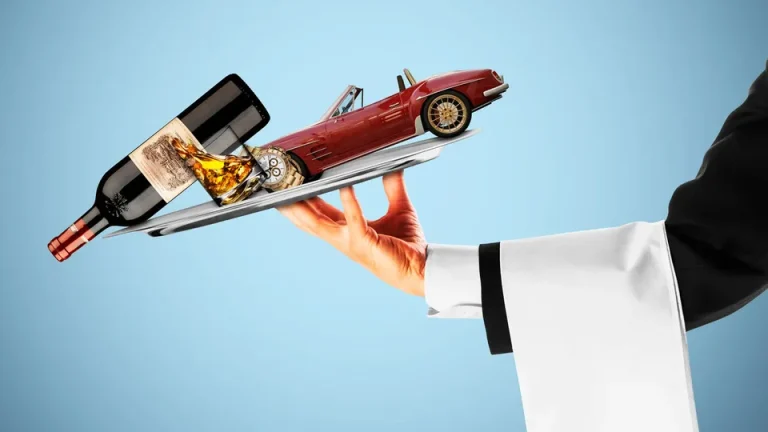For decades, the world’s wealthiest investors treated luxury goods as a dependable store of value. From rare bottles of Château d’Yquem to vintage Ferraris and Picassos, almost anything labelled “exclusive” seemed destined to appreciate. A bottle of the famed Château d’Yquem 2010, once praised for its apricot sweetness, hints of toasted almond, and white-truffle complexity, rose more than 60% in value between the mid-2010s and 2023. Classic cars, aged whisky, trophy homes, and investment-grade art followed the same trajectory. Knight Frank’s Luxury Investment Index climbed an astonishing 70% between 2015 and 2023, confirming what many already believed: the rich were getting richer—and so were their cellars, garages, and galleries.
But by late 2023 and throughout 2024–25, something changed. Prices fell. Demand softened. Suddenly, luxury was no longer an automatic growth asset. And today, more of the ultra-wealthy are quietly retreating from collectible markets they once dominated.
Why?
The Great Luxury Slowdown
The first major shift is macroeconomic. Ultra-rich investors are not immune to high interest rates. While they rarely borrow in the same manner as ordinary households, they do use low-rate environments to leverage expensive purchases. Higher global borrowing costs have reshaped portfolios everywhere, pushing even billionaires back toward safer, more liquid assets.
At the same time, central banks have tightened monetary policy, governments have increased scrutiny of wealth, and geopolitical tensions—from Russia’s invasion of Ukraine to U.S.–China rivalry—have increased the perceived risk of holding illiquid or politically sensitive assets abroad. A Basquiat might always be beautiful, but it is not easily moved across borders when sanctions, asset freezes or customs regulations can intervene.
As one wealth manager in London put it:
“The mood has shifted from indulgence to insulation.”
The Supply Problem: Too Many ‘Rare’ Assets
The second force reshaping luxury markets is oversupply. Ironically, rarity—once the entire justification for luxury investment—has been diluted.
- Top wine producers now release more “special edition” vintages than ever.
- Automakers create endless “limited-run” models to capitalise on collector demand.
- Luxury watchmakers flood the market with variations intended to lure foreign buyers.
The ultra-rich have noticed. The more “rare” goods become available, the less exclusive they feel—and the more quickly resale prices flatten.
Even art, long considered the final frontier of scarcity, experienced something similar. The rapid rise of global galleries, private auctions, and art-fair circuits created a flood of contemporary work. Many collectors now feel they bought into a hype cycle rather than a long-term store of value.
The China Factor
China once powered luxury demand worldwide. Chinese collectors purchased fine wine at unprecedented volumes, bought European art in record numbers, and snapped up watches, jewellery, and penthouses in London, Paris and Singapore.
But China’s post-pandemic recovery has been weak. Youth unemployment is high, household confidence is low, and the government continues to suppress conspicuous displays of wealth. This has sharply reduced high-end demand.
A single wealthy demographic—China’s elite—was large enough to drive wine prices, property markets and luxury auctions. When that engine sputtered, global markets felt the effect.
Experience Over Ownership
Another generational shift is under way: today’s rich increasingly prefer experiences to collectibles.
Private aviation hours, exclusive travel, wellness retreats, residency-only dining, and high-end sports events are expanding as investment in tangible luxury shrinks. The young ultra-rich—tech founders, crypto millionaires, entertainment moguls—tend not to share their parents’ love of physical collections.
A 2024 UBS report found that high-net-worth millennials are 70% more likely to invest in “experiential luxury” than in art or wine. This shift drains liquidity from traditional collectible markets.
The Problem of Storage, Insurance and Regulation
Luxury ownership has always carried hidden costs:
- Wine must be stored at perfect temperature.
- Classic cars require maintenance, restoration, and insured storage.
- Art demands climate-controlled security.
- Trophy homes come with extraordinary tax implications.
In an era of rising global regulation, governments have become more aggressive in taxing or tracking high-value assets. Several European countries now require additional disclosure for art and jewellery over certain thresholds. Switzerland has tightened rules around storing foreign luxury items in bonded warehouses.
The ultra-rich increasingly ask a simple question:
“Why pay to store something that isn’t appreciating?”
Crypto and Tech Are the New ‘Luxury Assets’
Even as the wealthy flee traditional luxury goods, they are not abandoning risk. They are simply redirecting it.
Tokens, AI companies, private-equity tech funds, and digital infrastructure projects now attract capital that once flowed into mansions and vintage wine.
These assets:
- are liquid
- scale globally
- are less regulated (for now)
- offer higher potential returns
As one Singapore-based investor described it:
“A bottle of wine can double in ten years. A good AI startup can double in ten months.”
Luxury Isn’t Dead; It’s Resetting
The luxury slowdown does not mean the end of opulence. It signals a return to fundamentals:
- Rarity must be real.
- Supply must be limited.
- Demand must be organic, not speculative.
- Provenance and history matter more than marketing.
Some categories—super-rare art, historically important cars, first-growth Bordeaux—will retain their place as long-term assets. But the era in which “luxury” automatically meant “profit” is over.
The ultra-rich are not poorer. They are simply more cautious, more strategic, and less sentimental.
And in a world of higher rates, unstable geopolitics, and digital opportunity, luxury for luxury’s sake no longer looks like good investing.

